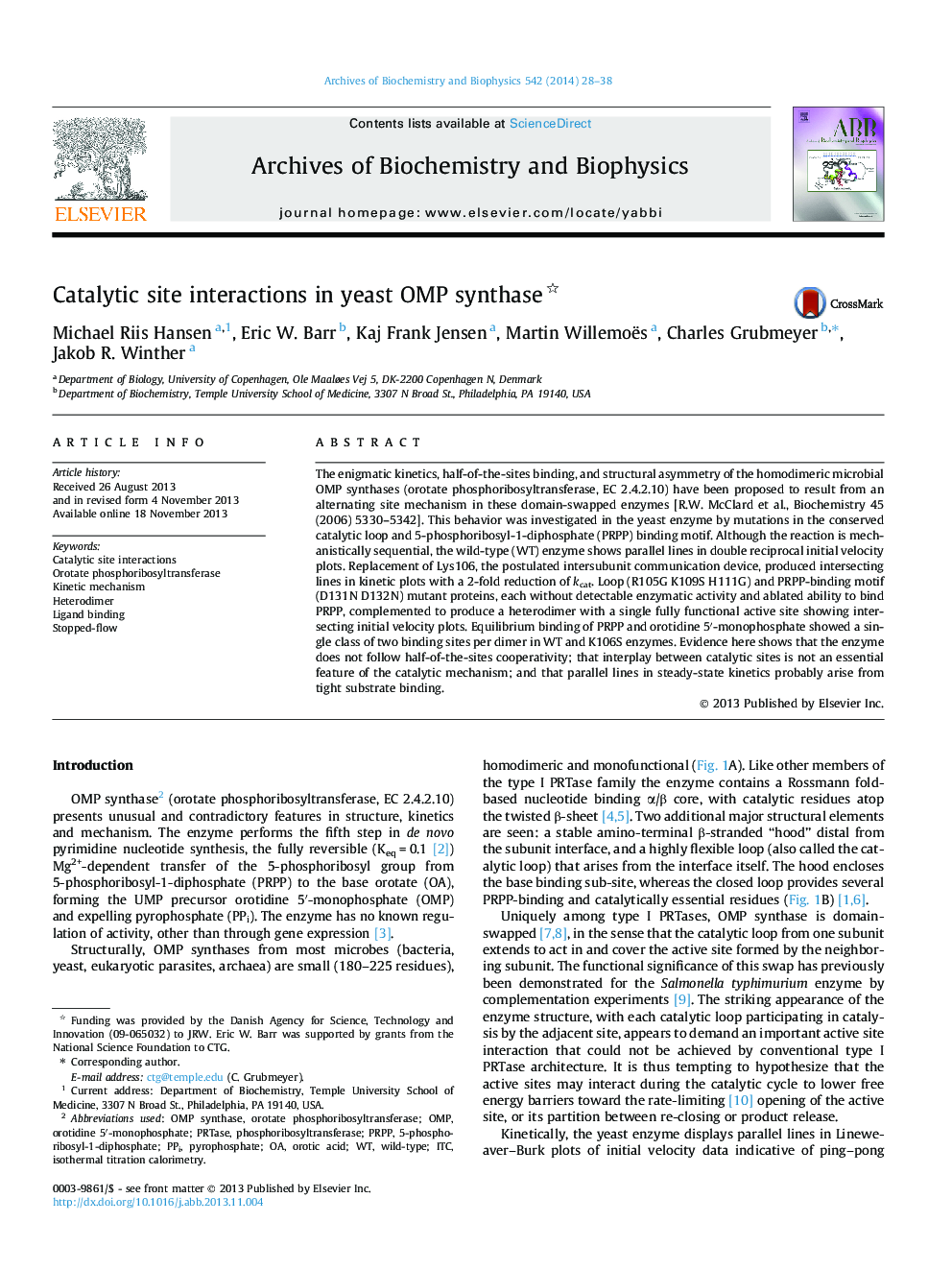| کد مقاله | کد نشریه | سال انتشار | مقاله انگلیسی | نسخه تمام متن |
|---|---|---|---|---|
| 1925273 | 1536357 | 2014 | 11 صفحه PDF | دانلود رایگان |

• Dimeric yeast OMP synthase binds two molecules of OMP or PRPP per dimer.
• Parallel initial velocity plots of WT enzyme become intersecting for K106S enzyme.
• Catalytic site (D131N D132N) or catalytic loop (R105G K109S H111G) was ablated.
• Ablated enzymes did not bind PRPP or perform catalysis at detectable levels.
• Mutants complemented to produce a heterodimer with WT-like kinetic parameters.
The enigmatic kinetics, half-of-the-sites binding, and structural asymmetry of the homodimeric microbial OMP synthases (orotate phosphoribosyltransferase, EC 2.4.2.10) have been proposed to result from an alternating site mechanism in these domain-swapped enzymes [R.W. McClard et al., Biochemistry 45 (2006) 5330–5342]. This behavior was investigated in the yeast enzyme by mutations in the conserved catalytic loop and 5-phosphoribosyl-1-diphosphate (PRPP) binding motif. Although the reaction is mechanistically sequential, the wild-type (WT) enzyme shows parallel lines in double reciprocal initial velocity plots. Replacement of Lys106, the postulated intersubunit communication device, produced intersecting lines in kinetic plots with a 2-fold reduction of kcat. Loop (R105G K109S H111G) and PRPP-binding motif (D131N D132N) mutant proteins, each without detectable enzymatic activity and ablated ability to bind PRPP, complemented to produce a heterodimer with a single fully functional active site showing intersecting initial velocity plots. Equilibrium binding of PRPP and orotidine 5′-monophosphate showed a single class of two binding sites per dimer in WT and K106S enzymes. Evidence here shows that the enzyme does not follow half-of-the-sites cooperativity; that interplay between catalytic sites is not an essential feature of the catalytic mechanism; and that parallel lines in steady-state kinetics probably arise from tight substrate binding.
Journal: Archives of Biochemistry and Biophysics - Volume 542, 15 January 2014, Pages 28–38